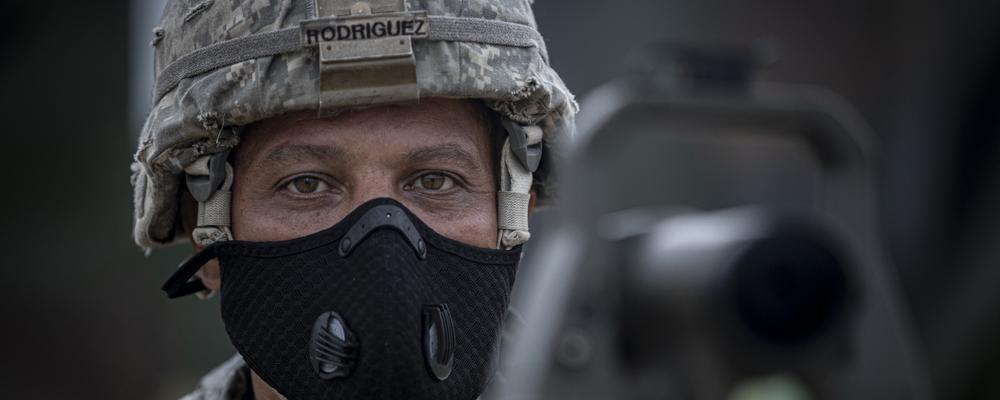
Vigilance Still Required
Severe acute respiratory coronavirus 2, known as coronavirus-19 or COVID-19, continues to challenge the United States, including the health care system.
This is apparent from how routine it has become to have 1,000 COVID-19 deaths a day seven months into the pandemic, even with all the progress in treating the infection. One American is dying approximately every 80 seconds from coronavirus. In all, more than 210,000 Americans have died from COVID-19 with more than 7 million infected.
Unfortunately, there seems to be no end in sight until a safe and effective vaccine is widely available. The virus has spread to almost every corner of the country and is surging again in places thought to have turned the corner. The latest projections put the death toll at 300,000 by Dec. 1.
To make matters worse, COVID-19 has closed many businesses, some temporarily, others permanently. More than 51 million Americans have filed for unemployment benefits. In addition, some children have not been in classroom since March. Military readiness has also been impacted.
Good & Bad News
The flu season is nearly upon us. It occurs in the fall and winter in the United States, with peak activity between December and February. Currently, only 1.2% of patient visits reported through the Centers for Disease Control and Prevention were due to an influenza-like illness.
The good news is that this percentage is below the national baseline of 2.4% during flu season. The bad news is, those with the flu could be predisposed to the more serious COVID-19. Individuals infected with both viruses would have a more difficult clinical outcome. Some would be unable to clear both viruses, resulting in more deaths, especially in older people or those with pre-existing conditions.
Medical researchers and investigators are making significant progress on a safe and effective vaccine. Many believe one or more vaccines could be in wide distribution sometime next year. That would be a major achievement for a virus unknown to man until late last year. Most vaccines take years to develop.
But that still leaves many months without a widely available vaccine. The second wave of this pandemic could occur in the fall and winter coinciding with the flu. It would come in the form of another major outbreak with large clusters of infection.
History provides many cautionary tales about second waves of a deadly virus. The second wave of the 1918 influenza pandemic was much worse than the first and responsible for most of the deaths in the United States. In the summer of 1832, commerce was in part the reason for failure of New York City leaders to act when cholera erupted in lower Manhattan killing nearly 3,000 people.
Unfortunately, history also tends to repeat itself. In the words of Pulitzer Prize-winning author and historian, David McCullough, “A nation that forgets its past can function no better than an individual with amnesia.”
Front Lines
National Guard soldiers and airmen have been critical to pandemic response in every state, Guam, Puerto Rico, the U.S. Virgin Islands and the District of Columbia.
They have combined their military training with civilian-acquired skills to distribute food, deliver medical supplies and equipment, operate testing facilities, and perform many other essential tasks.
At the height of the Guard mission, more than 47,000 Guard soldiers and airmen were activated and on duty. At the end of September, nearly 19,000 were still on the COVID-19 front lines. The president has extended federal support of the mission through the end of the year, but I suspect it will be needed into 2021. The Guard may even be asked to help distribute a vaccine.
I’m sure that many of those on duty feel like it’s been 17 months and not seven. We’re all suffering from COVID-19 fatigue. None of us like wearing masks, altering our travels and avoiding crowds. But we must remain vigilant as these modest actions help protect, ourselves, our families, our units and co-workers from a highly contagious disease.
Protect the Force
The secretary of defense has directed all military and civilian personnel to wear cloth face masks when they cannot maintain six feet of social distance in public areas or work centers on all Defense Department properties, installations and facilities.
Face masks should fit snugly against the side of the face, be secured with ties or ear loops and include multiple layers of fabric. Everyone should also be washing our hands frequently with soap and water for at least 20 seconds or using hand sanitizer.
In light of the continuing spread of the coronavirus, leaders at every echelon must educate their personnel on these simple measures and set the standard by example. They should also take these practices home to help protect their families. More information on COVID-19 precautions is available on CDC and DoD websites.
Our knowledge of this virus is expanding on a daily basis as more scientific data becomes available. For example, based on analysis of current scientific data one of the world’s leading infectious disease specialists recommends wearing of eye coverings for added protection against COVID-19.
And science continues to tell us that to reduce spread of coronavirus, our only hope right now is to alter our behaviors and adhere to directives of the SECDEF and the CDC.
Finally, the United States continues to have more difficulty than some other developed nations in bringing the virus under control. One reason is insufficient testing. More people should take the test. One person can, in fact, put family members, co-workers, and the entire community at risk for developing COVID-19. Therefore, more viral testing needs to be done.
By adhering to these simple directives, the nearly 450,000 soldiers and airmen of the National Guard can best protect themselves, their families, and their units from coronavirus and live up to the enduring motto, “Always Ready, Always There!”



